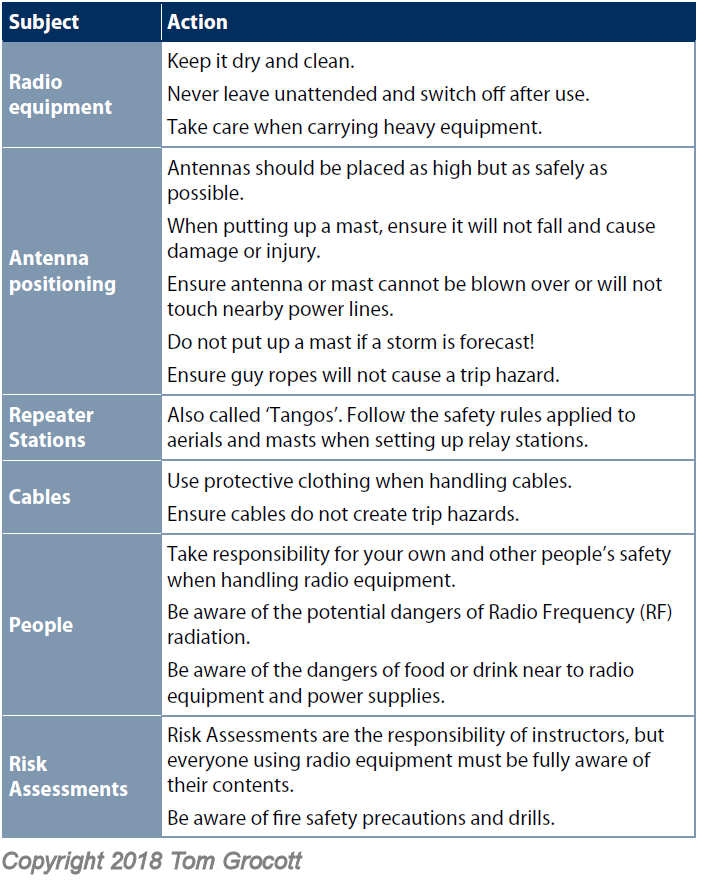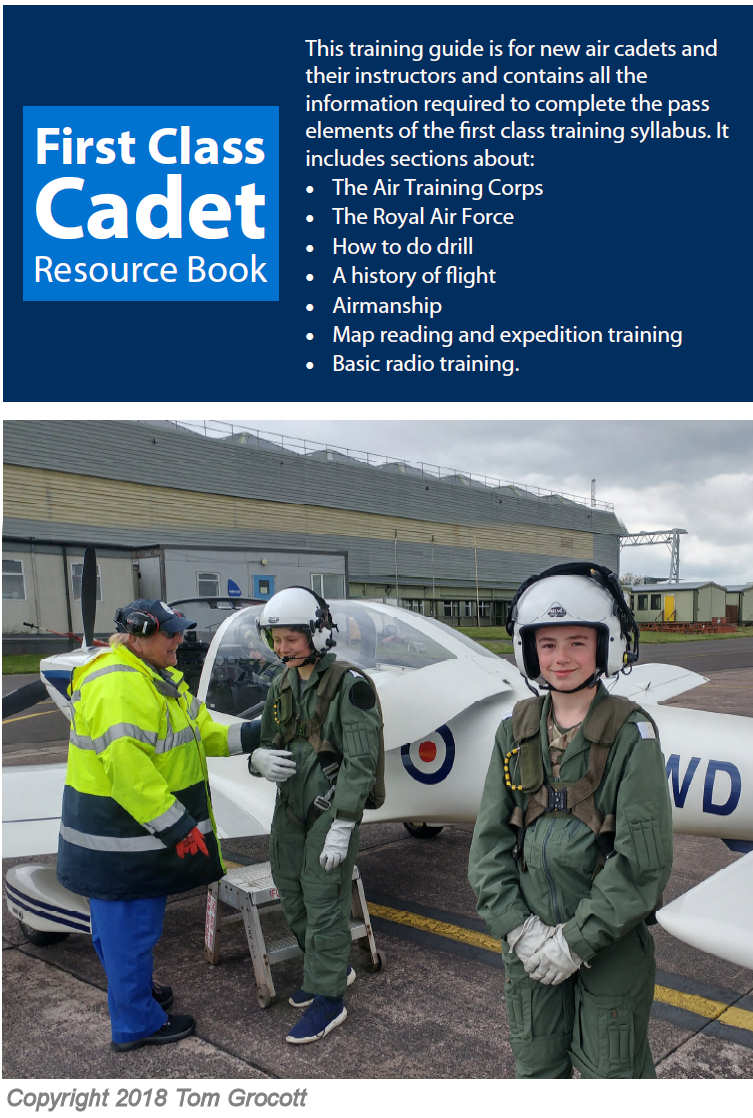Basic Radio for Air Cadets (First Class Training)
The article below is an extract from the First Class Cadet Resource Book available exclusively from www.cadetdirect.com. Please note this information is subject to Copyright 2018 Thomas Grocott. Not for reproduction. Thomas Grocott has asserted his right to be identified as author of this work in accordance with the Copyright, Designs and Patents Act 1988. All rights reserved. Some images in this publication are Crown Copyright and contain public sector information licensed under the Open Government Licence v3.0.
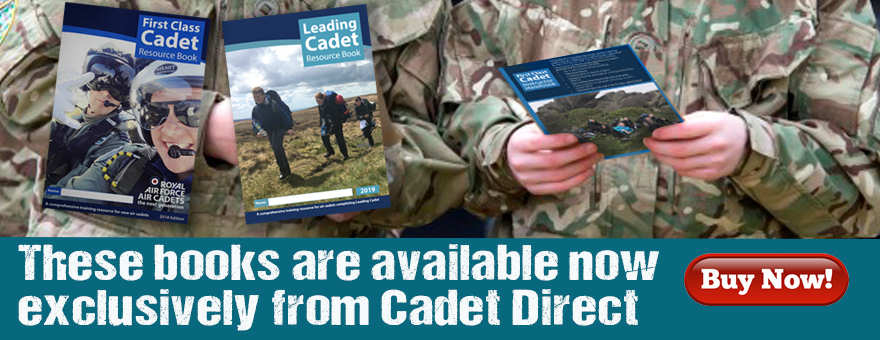

LO1: Understand types of radio equipment used within the RAF Air Cadets.
• Describe characteristics of types of radio equipment used within the Air Cadet radio networks.
• Describe how radio equipment’s operational frequency can limit its use.
• Outline the link between antennas and the range of radio transmissions.
• Describe some of the features of an Air Cadet radio network that enable the sending of messages.
LO2: Be able to send messages on the Air Cadet radio network.
• Use the phonetic alphabet to spell words and convey figures in radio messages.
• Use radio procedures to obtain radio checks.
LO3: Be able to follow procedures needed for the safe use of radio.
• Demonstrate the safe care, handling and disposal of radio batteries.
• Show correct safety procedures when using portable radio equipment.
• Identify health and safety issues associated with radio operations when operating radio equipment.
Additional basic radio iinstructor notes can be found in the First Class Cadet Instructor's Handbook available here.

There are a few different types of radio used within the Air Cadets, and each have different uses. A radio set is often called a transceiver, meaning that they both contain a transmitter and a receiver. This means that you can listen to transmissions coming in from others and broadcast (transmit) your own.
Base Stations
• Base stations are permanent/ semi-permanent fixed radios.
Pros
• VHF and UHF range of around 50km.
• HF- UK wide (or further).
• Reliable and good output.
Cons
• Difficult to move quickly and easily.
Vehicle Equipment (pictured below on right)
• For vehicles, so more mobile than base stations.
Pros
• Has a better antenna than a hand held radio.
• Nearly as powerful as base station.
Cons
• Range less than a base station, only around 30km.
• Uses the vehicles battery.


Different types of radio use different frequencies. Some have a longer range, meaning signal travels further than ones operating on a shorter wavelength.
• Generally, the higher the frequency, the shorter the range.
• MF Medium Frequency 300kHz to 3MHz
• HF High Frequency 3MHz to 30MHz
• VHF Very High Frequency 30MHz to 300MHz
• UHF Ultra High Frequency 300MHz to 3GHz

The operating range of the equipment also depends on how powerful the equipment is.
• Sometimes, even the weather can effect how far a transmission can be heard.
• Standing too close to metal objects or buildings can also restrict range dramatically. To increase range:
• Use high ground, or hold the antenna as high as possible if using a portable set.
• Use a professionally installed mast.
• Position the antenna away from power lines.
Radio Masts
• The height of a mast and the power of the transmitter influences how far a transmission will travel.
• The tallest, most powerful masts can have ranges of over 50km, whilst a medium sized mast can have a range of about 30km. Small hand held radio antennas normally only have a range of 1-5km.
• UHF and VHF frequencies do not pass through objects well and are limited to line of sight. Putting an antenna as high as possible will increase its range.

The Air Cadets has its own nationwide system of radio stations. This ‘net’ uses High Frequency (HF) for long range. The word net is used because a number of radio stations work together, connected by the invisible strands of a single frequency – rather like a net. There are two types of net that Air Cadets use:
Directed Net
• This net is controlled by a net control station (NCS) that looks after all communications.
• The NCS sends most messages and they must pass through it before they are passed on.
• It chooses who joins or leaves the net.
• The NCS should have experienced operators with enough personnel to handle all the traffic anticipated.
Free Net
• This net is not controlled by any one and all stations are free to talk to one another.
• Anyone can send a message to anyone else and no-one needs permission to send a message.
• There is no net control station.
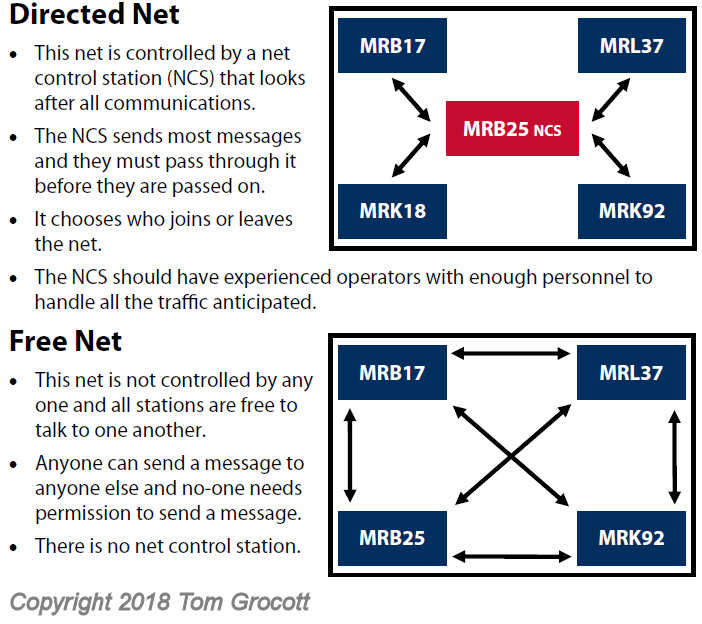
Summary
• A directed net has a Net Control Station which has control of transmissions.
• All stations in a free net can talk to one another without permission.

When communicating with a radio, phonetics are often used. Instead of saying a letter name, which may be unclear if the operator has a strong
accent or when reception is poor, each number and letter is assigned a word, which can be found below. You will need to learn the words which go with each letter and number.
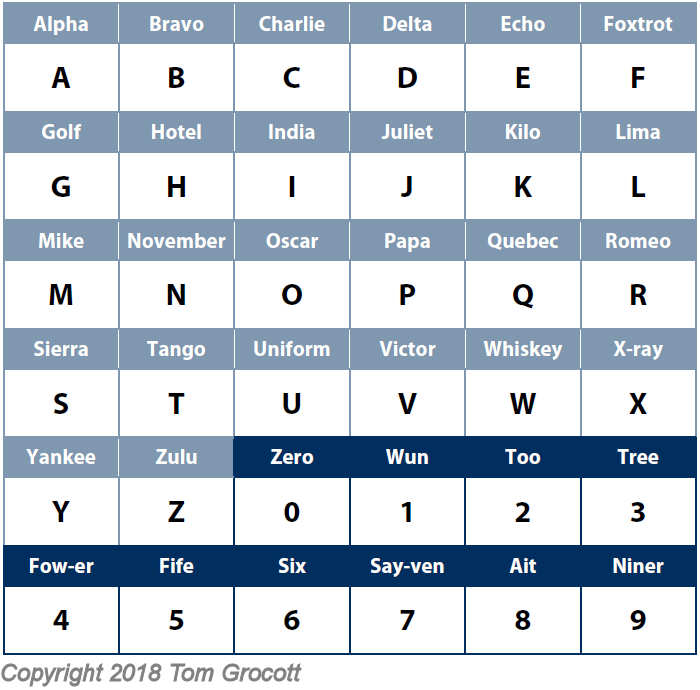
Summary
• Phonetics are used when saying letters and numbers.
• Numbers are normally said in single digits.

Radio waves will only travel so far before they become too weak to be useful, but there are many factors that affect how far they travel. More about this is discussed on the ’Radio Frequencies’ page. Radio operators can check if they are understood by performing a radio check.
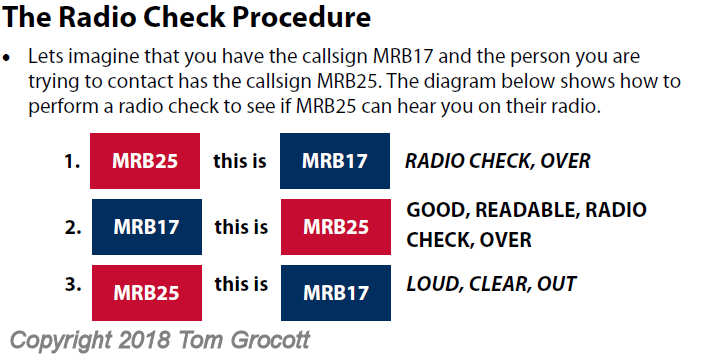
Prowords
• If the radio signal is strong, the phrases GOOD, READABLE or LOUD, CLEAR are sufficient. But if what is heard is not as good as expected, the radio operator must pick one word from each of the tables below to best describe the situation. The words used are procedural words, or prowords.
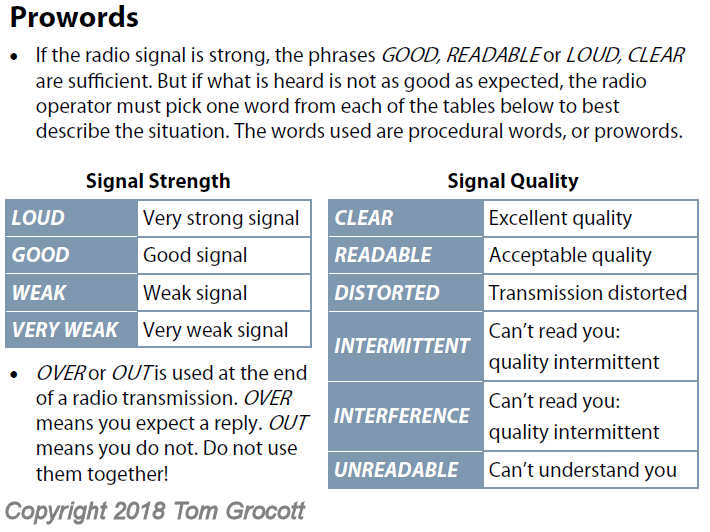

Portable radios use batteries, which must be looked after so they work their best. Keeping transmissions short and using a lower power setting will maximise a batteries life.
Using a Handheld Radio
• A handheld radio normally has a short range and only usually operates well in distances less than 5km.
• However, many things can obstruct radio signals and can make this range even shorter, including being in a valley or being near lots of buildings. Even leaves on trees can limit a radio’s range. If the transmission is unclear, consider moving to higher ground to increase range.
• The battery life of a typical modern handheld radio is only 6-8 hours, so keep messages short and turn off the radio if it is not being used on an
exercise, as this will maximise a battery’s life.
• If appropriate, use a lower power setting if your radio allows this. Keeping transmissions short and to the point will also enable your radio to be used for longer. Don’t forget to keep your battery charged and keep radios dry. A wet radio is a broken radio!
• Do not hold a radio by its antenna. If you do this, it will weaken and break over time.
• When you put your radio back, make sure it is in its charging cradle correctly.
Battery Care
• Handheld radios use batteries which are often specific for the type of radio being used. Ordinarily a battery made for one type of radio will not fit into another.
• When they no longer work batteries should be recycled at specialised disposal points. Never put a battery in a normal rubbish bin.
• Rechargeable batteries can only be charged a few hundred times before they become worn out, so turn off radio equipment when not in use.
When using batteries, you should follow some safety precautions:
Battery Safety
• Cover battery terminals when in your pocket or a box.
• Lead acid batteries should be kept upright to prevent leakage.
• Batteries can be carried in an empty pocket but they must be in a plastic bag or plastic box.
• Keep batteries dry.
• Don’t pierce or burn batteries, they may explode!
• Do not overcharge batteries and use the correct charger.
Summary
• Keep transmissions short to save battery.
• Only use the specific battery type for your radio.
• Follow battery safety instructions.

Using a Radio Safely
It is important that radios and their associated equipment are used safely as they are a powerful communication tool if used correctly. If you are not sure ask your instructor. They will be able to help you if you have a problem.
Subject Action
• Radio equipment
• Keep it dry and clean.
• Never leave unattended and switch off after use.
• Take care when carrying heavy equipment.
Antenna Positioning
• Antennas should be placed as high but as safely as possible.
• When putting up a mast, ensure it will not fall and cause damage or injury.
• Ensure antenna or mast cannot be blown over or will not touch nearby power lines.
• Do not put up a mast if a storm is forecast!
• Ensure guy ropes will not cause a trip hazard.
Repeater Stations
• Also called ‘Tangos’. Follow the safety rules applied to aerials and masts when setting up relay stations.
Cables
• Use protective clothing when handling cables.
• Ensure cables do not create trip hazards.
People
• Take responsibility for your own and other people’s safety when handling radio equipment.
• Be aware of the potential dangers of Radio Frequency (RF) radiation.
• Be aware of the dangers of food or drink near to radio equipment and power supplies.
Risk Assessments
• Risk Assessments are the responsibility of instructors, but everyone using radio equipment must be fully aware of their contents.
• Be aware of fire safety precautions and drills.
